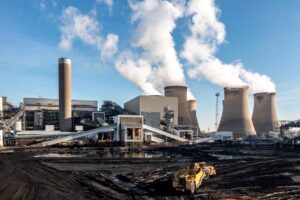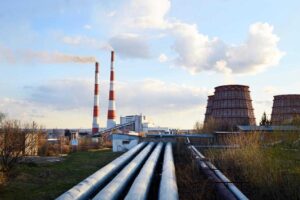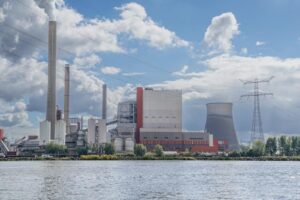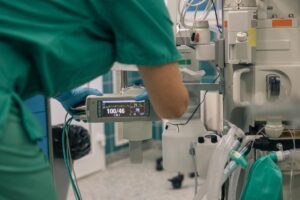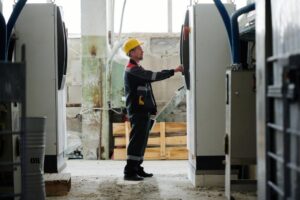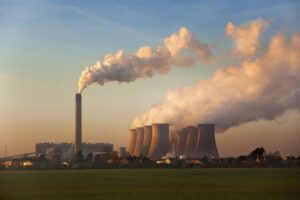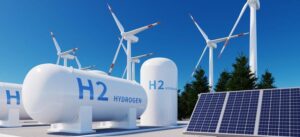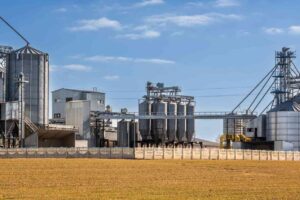In today’s era of rapid technological development, gas sensors, as a key scientific and technological tool, are playing an increasingly important role in the field of ecology. Not only are these sensors changing the way we observe the natural environment, they are also providing scientists with more accurate, real-time data to help us better understand and protect ecosystems. This article takes an in-depth look at the use of gas sensors in ecological research and the profound impact they have on our understanding of the natural world.
Introduction
Ecology is a discipline that studies the interaction between organisms and their environment, and the application of gas sensors provides researchers with new perspectives, allowing them to gain a more comprehensive and in-depth understanding of the distribution, concentration, and changes of gases in ecosystems.
Case Study of Gas Sensors in Ecological Research
There are many application cases for these gas sensors in ecological research. Their practical application in ecological research will be demonstrated below through specific examples.
- Monitoring greenhouse gases in the atmosphere
In terms of atmospheric greenhouse gas monitoring, the application of infrared sensors is particularly significant. Researchers use these sensors to monitor the concentrations of carbon dioxide and methane in the atmosphere. By monitoring at different locations and times, they can gain a more comprehensive understanding of climate change and the impact of the greenhouse effect.

For example, in a study conducted in the Amazon rainforest, researchers used infrared sensors to monitor the concentration of carbon dioxide in the atmosphere to assess the rainforest’s ability to absorb the greenhouse gas. This real-time monitoring provides scientists with valuable data to better understand the Amazon rainforest’s role in the global carbon balance.
- Gas exchange in forest ecosystems
In the study of forest ecosystems, researchers often use infrared sensors and electrochemical sensors. By attaching infrared sensors to the leaves of trees, scientists are able to monitor the amount of carbon dioxide released and absorbed by trees, thereby understanding the impact of forests on carbon in the atmosphere.

Additionally, electrochemical sensors are commonly used to monitor carbon monoxide concentrations in forests, particularly in wildland fire research. By monitoring the carbon monoxide produced by fires, researchers can assess the impact of fires on forest ecosystems and develop corresponding ecological restoration strategies.
- Gas monitoring in water bodies
Gas monitoring in water bodies is critical to understanding the health of aquatic ecosystems. Infrared sensors and electrochemical sensors are widely used to monitor dissolved oxygen and carbon dioxide in water bodies.

In a study of a lake ecosystem, researchers used infrared sensors to monitor carbon dioxide concentrations in lake water to understand the lake’s exchange of carbon dioxide from the atmosphere. At the same time, electrochemical sensors are used to monitor dissolved oxygen in water, helping scientists assess the ecological health of water bodies.
Types and Principles of Gas Sensors
Gas sensors are indispensable tools in ecological research and come in many types and with different principles. Understanding the different types of sensors and how they work is key to a deeper understanding of their applications in ecology.
- Infrared sensor

Infrared sensors are a widely used class of gas sensors that are particularly good at detecting greenhouse gases in the atmosphere, such as carbon dioxide and methane. Its working principle is based on the absorption characteristics of infrared light by the target gas. When infrared light passes through a gas, the light waves of specific frequencies absorbed by the target gas are measured, thereby determining the concentration of the gas.
ESE-IR-100M infrared gas sensor is mainly composed of infrared correlation filter technology (GFC) and self-designed long optical path gas absorption cell (L-Cell), wavelength filter, infrared detector and high-precision signal processing circuit to complete the gas Quantitative analysis in the infrared band. The sensor has the characteristics of high precision, good stability and fast response time.
This principle makes infrared sensors very effective in monitoring atmospheric greenhouse gases. By deploying these sensors in natural ecosystems, researchers can monitor changes in greenhouse gases in real time, providing valuable data for the study of global climate change.
- Electrochemical sensors
Electrochemical sensors are another common type of gas sensor, which are mainly used to monitor toxic gases such as carbon monoxide and nitrogen oxides. These sensors are based on electrochemical reactions between gases and electrolytes. When a target gas enters the sensor, it reacts with the electrolyte, causing a change in current or voltage. This change is measured to determine the concentration of the gas.
In ecological research, electrochemical sensors are widely used to monitor the concentration of toxic gases in the air to assess air quality and plant health in ecosystems.
- UV-DOAS Gas Sensor

ESE-UV-500M UV-DOAS Gas Sensor is an independently self-developed flue gas analysis product which is suitable for online gas analysis of environmental protection and industrial control sites. Based on Ultraviolet Absorption Spectroscopy and Differential Optical Absorption Spectroscopy, it adopts optical technology platform, and can conduct online analysis and measurement for gases including SO2, NO, NO2, H2S, Cl2 and NH3, etc. Under normal conditions, it is used to measure gas component of SO2, NOX and other gas components can be extended. One module can simultaneously carry out measurement for 5 gas components at maximum. The product owns features of high measurement accuracy and reliability, fast response and wide application.
- Semiconductor sensor
Semiconductor sensors are based on the resistance change of semiconductor materials and detect the concentration of the target gas by measuring the resistance change caused by the gas. This sensor is suitable for detecting some common organic gases and volatile organic compounds.
In ecological research, semiconductor sensors are often used to monitor volatile organic compounds in soil, or to study physiological processes in plants, such as the volatile organic compounds released by plants under specific environmental conditions.
- Comprehensive application of different sensors
In complex research scenarios in ecology, it is often necessary to comprehensively apply multiple types of gas sensors to fully understand the dynamic changes of gases in the ecosystem. For example, when studying aquatic ecosystems, infrared sensors can be used to monitor dissolved gases in the water, electrochemical sensors can monitor toxic gases in the water, and semiconductor sensors can monitor volatile organic compounds in the water.
| Sensor Type | Function | Characteristic | Superiority | Application Scenarios |
| Infrared absorption sensor | Detection of specific gases | -high sensitivity | -Not affected by atmospheric humidity and other gases | -Industrial gas detection (e. g. methane, carbon dioxide) |
| electrochemical sensor | The gas concentration was detected | -Relatively low cost | -high sensitivity | -Indoor air quality monitoring |
| gas concentration sensor | The gas concentration was detected | -Digital output, easy to integrate into the system | -High precision, and low power consumption | -Greenhouse gas monitoring |
| Gas conduction sensor | Detection of specific gases | -High selectivity, and is sensitive to a specific gas | -long-life | -Gas leakage detection |
| Light scattering sensor | Test for the concentration of particulate matter. | -Can be used for air quality monitoring and environmental pollution monitoring | -Very sensitive | -air quality monitoring |
| Gas MS sensor | Analyze gas composition | -High resolution, able to analyze multiple gas components | -Suitable for both laboratory and industrial environments | -Atmospheric research and laboratory applications |
Technical Challenges and Innovation
With the wide application of gas sensors in ecological research, they also face some technical challenges. For example, issues such as sensor performance, data accuracy and stability under different environmental conditions. Researchers are constantly working to improve sensor technology and use more advanced materials and algorithms to solve these challenges. With the continuous development of technology, the application prospects of gas sensors in ecological research are exciting. In the future, we can expect smaller and smarter sensor devices to be more widely deployed in various ecosystems, providing scientists with more comprehensive and real-time data to better understand the mysteries of nature.
Q&A: Answer Readers’ Questions About The Use Of Gas Sensors In Ecological Research
Q1: What impact does the selection of gas sensors have on ecological research?
A1: Different types of gas sensors have differences in measurement accuracy, response time, and adaptability to the environment. For example, infrared sensors are superior for monitoring greenhouse gases, while electrochemical sensors are more suitable for detecting toxic gases. Researchers need to make reasonable choices based on specific research goals and environmental conditions when selecting sensors to ensure accurate and reliable data.
Q2: How does the applicability of gas sensors differ in different ecosystems?
A2: The applicability of gas sensors in different ecosystems is affected by environmental conditions. For example, infrared sensors are very effective in monitoring greenhouse gases in the atmosphere in forest ecosystems, while in bodies of water, electrochemical sensors may be more suitable for monitoring gas concentrations in water. Therefore, the characteristics of the study area and the type of ecosystem need to be considered when selecting and applying sensors.
Q3: What are the challenges of gas sensors in ecological research?
A3: Gas sensors face some challenges in ecological research, such as sensor performance stability under different environmental conditions and data consistency for long-term monitoring. Researchers are working to address these challenges, using more advanced materials and algorithms to improve sensor accuracy and reliability.
Q4: How can gas sensors help us better understand the health of ecosystems?
A4: Gas sensors provide scientists with rich data to help us better understand the health of ecosystems by monitoring gas concentrations and changes in real time. By monitoring greenhouse gases in the atmosphere, dissolved gases in water, etc., researchers can evaluate the absorption, release, and exchange of gases by ecosystems, providing scientific basis for environmental protection and ecosystem management.
Q5: What is the future development direction of gas sensor technology?
A5: The future development direction of gas sensor technology mainly includes smaller size, intelligence, and multi-function. Researchers are working to develop more portable and more sensitive sensors for wider deployment in various ecosystems. In addition, by integrating advanced data processing and communication technologies, future gas sensors will better adapt to complex research needs and provide scientists with richer, real-time ecological data.
Q6: What are the potential applications of gas sensors in areas other than ecological research?
A6: Gas sensors have potential applications in medicine, industrial production, agriculture and other fields. For example, in medicine, gas sensors can be used to analyze respiratory gases and assist in disease diagnosis. In industrial production, sensors can be used to monitor harmful gases in the production process to ensure worker safety. In agriculture, sensors can help monitor gas levels in the soil and optimize the environment for plant growth.
Conclusion
In ecological research, the application of gas sensors provides scientists with unprecedented convenience and possibilities. Through real-time monitoring and data analysis, we can gain a deeper understanding of changes in nature and provide scientific basis for environmental protection and ecosystem management. With the continuous advancement of technology, we are confident that we will make better use of gas sensors as a tool in the future to jointly protect the ecological balance of the earth.




